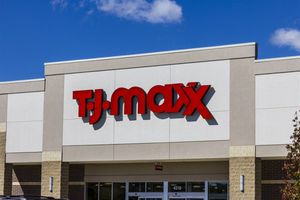The "Saudi Arabia Clinical Chemistry Analyzer Market to Reach US$ 249.11 Million by 2033 - 4.27% CAGR Boosted by Digital Health and POCT" report has been added to ResearchAndMarkets.com's offering.
The Saudi Arabia Clinical Chemistry Analyzer Market is expected to reach US$249.11 million by 2033 from US$170.98 million in 2024, with a CAGR of 4.27% from 2025 to 2033
The market for clinical chemistry analyzers in Saudi Arabia is expanding as a result of government investments in healthcare, an aging population that drives the need for precise, quick diagnostics, growing chronic diseases, technological advancements, and expanding point-of-care testing.
Saudi Arabia Clinical Chemistry Analyzer Market Overview
Saudi Arabia's ambitious healthcare modernization goals under Vision 2030 are driving the country's clinical chemistry analyzer industry's notable expansion. With a focus on modern diagnostics, this national strategy seeks to improve healthcare quality and diversify the economy. Reliable and high throughput clinical chemistry analyzers are in great demand as a result of investments in healthcare infrastructure that have expanded labs and diagnostic facilities in both urban and rural areas.
These analyzers are essential for identifying and tracking a variety of illnesses that are common in Saudi Arabian society, such as diabetes, heart disease, and liver problems. Therefore, in order to increase accuracy, decrease turnaround times, and effectively handle high numbers of patient samples, healthcare providers are progressively implementing automated and integrated clinical chemistry systems.
Saudi Arabia's clinical chemistry analyzer market is changing due to technological improvements. In order to improve diagnostic accuracy and workflow efficiency, manufacturers are releasing analyzers with cutting-edge technologies including automation, artificial intelligence, and improved biomarker identification capabilities.
Furthermore, point-of-care testing (POCT) equipment is becoming more widely used, allowing for quick diagnostics outside of conventional laboratory settings and enhancing accessibility in underserved and remote areas. Better patient management is made possible by the continuous connectivity and real time monitoring made possible by the integration of cloud computing and data management technologies. These developments support the Saudi healthcare industry's emphasis on precision medicine and digital transformation, which accelerates market expansion.
An aging population and an increase in the prevalence of chronic illnesses are two major demographic trends in Saudi Arabia that are driving up demand for clinical chemistry analyzers. For the senior population to properly manage a variety of medical disorders, frequent and thorough diagnostic testing is necessary.
Furthermore, the prevalence of diabetes and cardiovascular diseases has increased due to changes in lifestyle and urbanization, making early detection and continuous monitoring even more crucial. A competitive and quickly changing market is ensured by the existence of both public and private healthcare providers actively investing in cutting-edge diagnostic equipment.
All things considered, the clinical chemistry analyzer market in Saudi Arabia is expected to grow rapidly due to strategic healthcare efforts, technological advancements, and changing population health demands.
Key Factors Driving the Saudi Arabia Clinical Chemistry Analyzer Market Growth
Point of Care Testing (POCT) Expansion
One of the main factors propelling the clinical chemistry analyzer market in Saudi Arabia is the expanding use of point-of-care testing (POCT) equipment. Without requiring centralized laboratory processing, POCT allows for quick diagnostic testing close to the patient, providing results right away.
This is especially helpful in underserved and isolated locations with limited access to complete laboratory facilities. POCT increases the effectiveness of disease management, decreases hospital stays, and improves patient outcomes by enabling quicker clinical decision making.
Increased POCT deployment is in line with the Saudi government's efforts to expand access to healthcare throughout the kingdom. Technological developments have also improved the accuracy and usability of POCT equipment, facilitating their incorporation into emergency departments, primary care clinics, and mobile health units. This has accelerated market growth and broadened the diagnostic reach.
Focus on Digital Health and Precision Medicine
The Saudi Arabian healthcare industry is placing a greater emphasis on digital health and precision medicine, which is driving up demand for sophisticated clinical chemistry analyzers. Precision medicine requires extremely precise and thorough biochemical analysis in order to customize treatment based on individual patient data.
Personalized diagnostics and treatment plans are supported by the integration of laboratory data with electronic health records (EHR) made possible by modern analyzers that are outfitted with digital connectivity and artificial intelligence.
This data-driven method improves therapy optimization, monitoring, and disease diagnosis. The government's digital health programs promote the use of networked medical equipment that enables telemedicine and remote monitoring. As a result, clinical chemistry analyzers that facilitate advanced analytics and real time data exchange are turning into indispensable instruments that propel innovation and expansion in the Saudi diagnostic industry.
Growing Private Sector Involvement
The Saudi Arabian private healthcare industry is growing quickly and has a big impact on the market for clinical chemistry analyzers. In order to satisfy patients' growing demands for effective, high-quality care, private hospitals, diagnostic facilities, and specialty clinics are making significant investments in cutting-edge laboratory equipment.
Advanced clinical chemistry analyzers with automation, high throughput, and integration capabilities - all of which enhance workflow and shorten turnaround times - are given priority by these providers.
Rising healthcare costs and the public's increasing demand for private medical services are further factors driving private sector engagement. Additionally, collaborations between foreign diagnostic equipment manufacturers and private healthcare providers improve access to the newest technologies. The market is growing because of the constant improvements and uptake of advanced analyzers encouraged by this competitive environment.
Challenges in the Saudi Arabia Clinical Chemistry Analyzer Market
Maintenance and Technical Support
Saudi Arabia presents a considerable challenge in providing clinical chemistry analyzers with timely maintenance, calibration, and technical support, especially given the country's large geographic area and dispersed healthcare facilities.
Many labs have trouble quickly obtaining qualified technicians and approved service locations, particularly in isolated or underdeveloped areas. Routine maintenance or repair delays can result in extended equipment downtime, which can have a detrimental impact on patient care and diagnostic workflows.
Furthermore, uneven calibration might undermine clinician confidence in results by compromising test accuracy and dependability. Due to the intricacy of contemporary analyzers, specific technical knowledge is sometimes lacking locally. Repair durations may also be prolonged by a shortage of spare parts. To overcome these obstacles and guarantee consistent, reliable analyzer functioning throughout the kingdom, strong service networks, funding for local technician training, and efficient supply chains are required.
Alternative Technologies' Competition
Emerging diagnostic technologies like immunoassay platforms and molecular diagnostics are becoming more and more competitive in Saudi Arabia's clinical chemistry analyzer market. Highly sensitive and specific testing capabilities are provided by these cutting-edge technologies, which frequently yield faster findings and make it possible to discover complicated biomarkers that conventional clinical chemistry analyzers could miss.
Because of this, medical professionals are increasingly using molecular and immunoassay techniques to diagnose genetic disorders, infectious diseases, and applications of personalized medicine.
This change may restrict the ability of traditional clinical chemistry analyzers to expand, particularly in specialized testing markets. Furthermore, standalone analyzers are challenged by integrated platforms that include several testing techniques. Manufacturers of clinical chemistry analyzers must innovate to satisfy changing diagnostic expectations by increasing automation, expanding functionality, and integrating with digital health systems in order to stay competitive.
Company Analysis: Overview, Key Persons, Recent Developments, SWOT Analysis, Revenue Analysis
- Thermo Fisher Scientific
- Abbott Laboratories
- Siemens Healthineers
- Danaher Corporation
- Johnson & Johnson
- Sysmex ADR
- HORIBA, Ltd.
- Hitachi
Key Attributes:
| Report Attribute | Details |
| No. of Pages | 200 |
| Forecast Period | 2024 - 2033 |
| Estimated Market Value (USD) in 2024 | $170.98 Million |
| Forecasted Market Value (USD) by 2033 | $249.11 Million |
| Compound Annual Growth Rate | 4.2% |
| Regions Covered | Saudi Arabia |
Key Topics Covered:
1. Introduction
2. Research & Methodology
2.1 Data Source
2.2 Research Approach
2.3 Forecast Projection Methodology
3. Executive Summary
4. Market Dynamics
4.1 Growth Drivers
4.2 Challenges
5. Saudi Arabia Clinical Chemistry Analyzer Market
5.1 Historical Market Trends
5.2 Market Forecast
6. Market Share Analysis
6.1 By Product Type
6.2 By Test Type
6.3 By End User
6.4 By States
7. Product Type
7.1 Analyzers
7.2 Reagents
7.3 Others
8. Test Type
8.1 Basic Metabolic Panel
8.2 Liver Panel
8.3 Renal Profile
8.4 Lipid Profile
8.5 Thyroid Function Panel
8.6 Electrolyte Panel
8.7 Specialty Chemical Tests
9. End User
9.1 Hospitals
9.2 Diagnostics Laboratory
9.3 Research Laboratories & Institutes
9.4 Others
10. Top States
10.1 Dhahran
10.2 Riyadh
10.3 Khobar
10.4 Jeddah
10.5 Dammam
10.6 Others
11. Value Chain Analysis
12. Porter's Five Forces Analysis
12.1 Bargaining Power of Buyers
12.2 Bargaining Power of Suppliers
12.3 Degree of Competition
12.4 Threat of New Entrants
12.5 Threat of Substitutes
13. SWOT Analysis
13.1 Strength
13.2 Weakness
13.3 Opportunity
13.4 Threats
14. Pricing Benchmark Analysis
14.1 Thermo Fisher Scientific
14.2 Abbott Laboratories
14.3 Siemens Healthineers
14.4 Danaher Corporation
14.5 Johnson & Johnson
14.6 Sysmex ADR
14.7 HORIBA, Ltd.
14.8 Hitachi
15. Key Players Analysis
For more information about this report visit https://www.researchandmarkets.com/r/hqes1e
About ResearchAndMarkets.com
ResearchAndMarkets.com is the world's leading source for international market research reports and market data. We provide you with the latest data on international and regional markets, key industries, the top companies, new products and the latest trends.
View source version on businesswire.com: https://www.businesswire.com/news/home/20250822528076/en/
Contacts
ResearchAndMarkets.com
Laura Wood, Senior Press Manager
press@researchandmarkets.com
For E.S.T Office Hours Call 1-917-300-0470
For U.S./ CAN Toll Free Call 1-800-526-8630
For GMT Office Hours Call +353-1-416-8900





